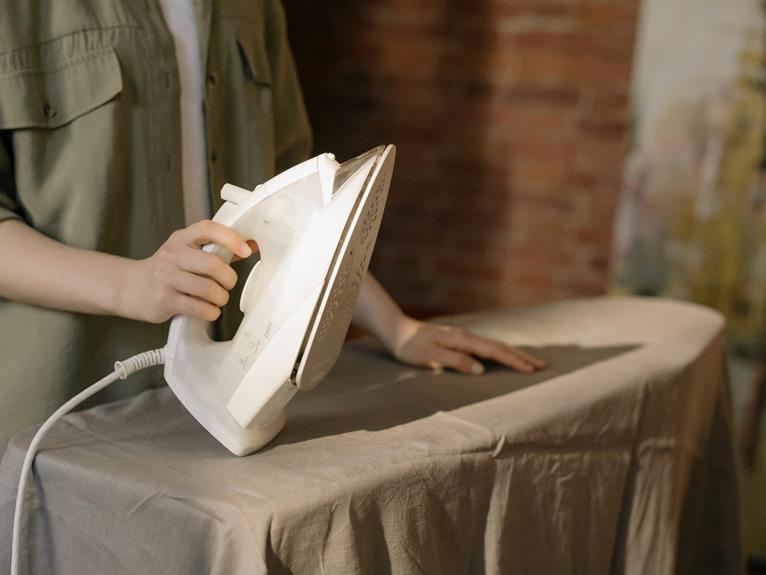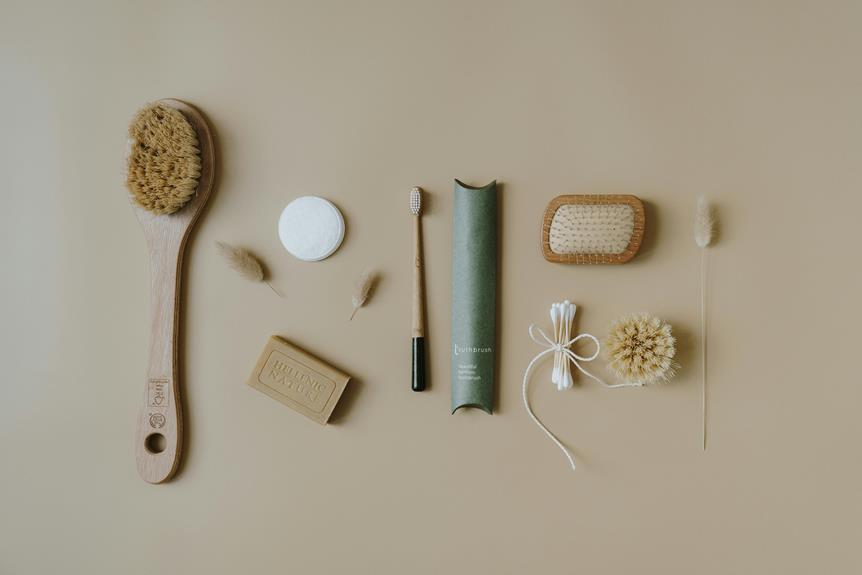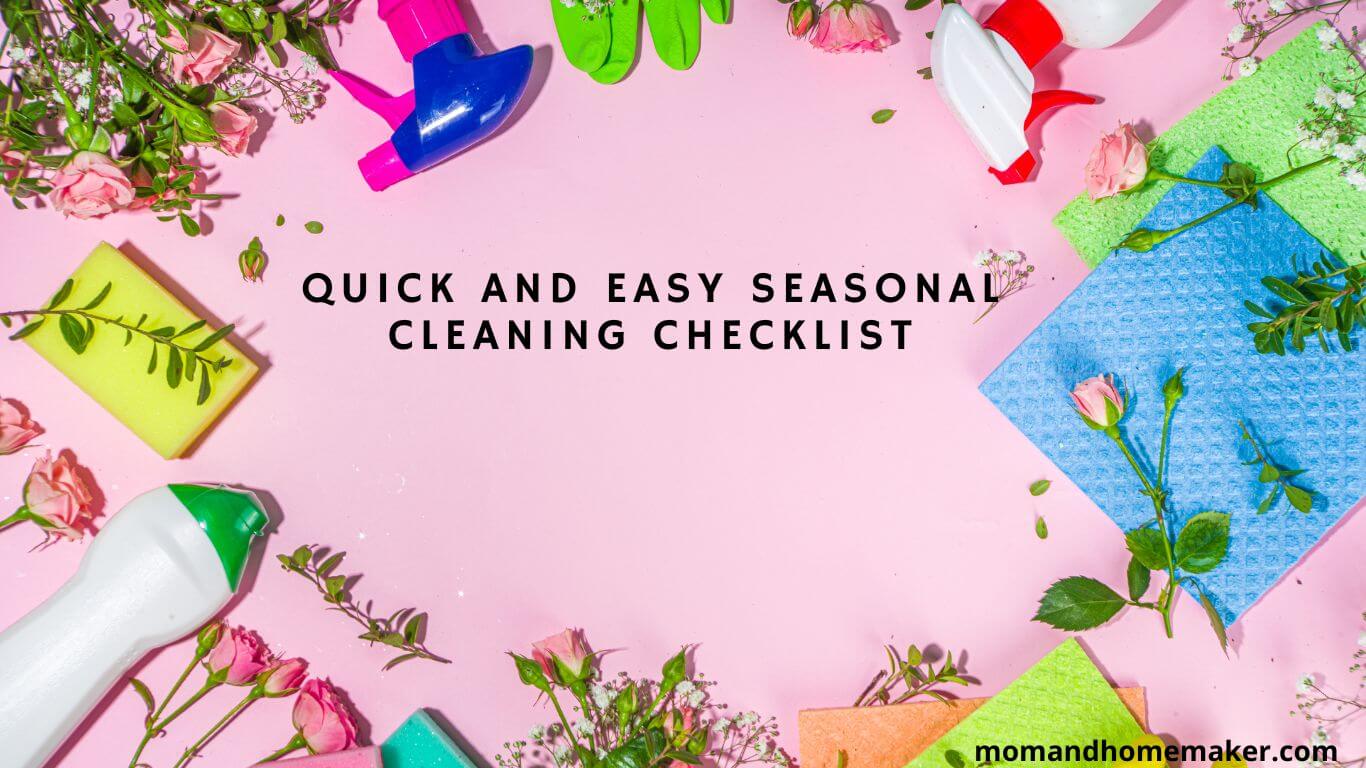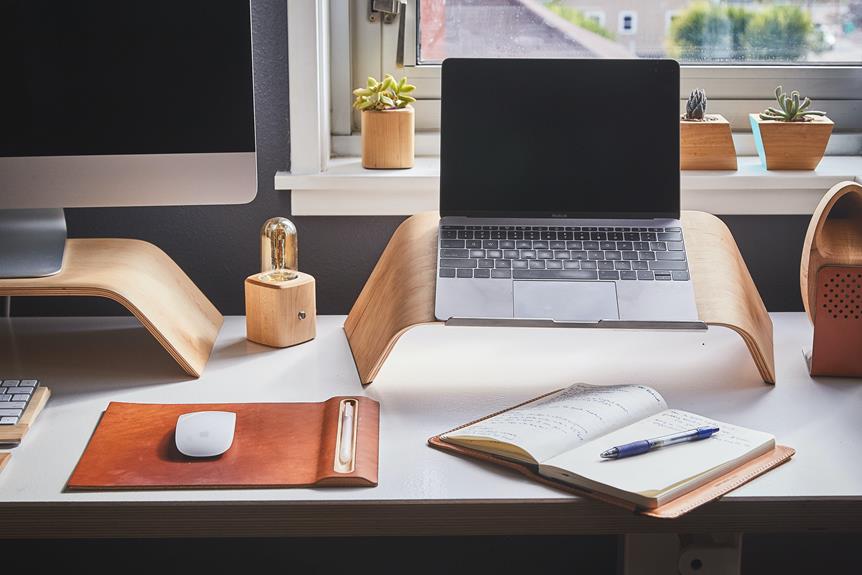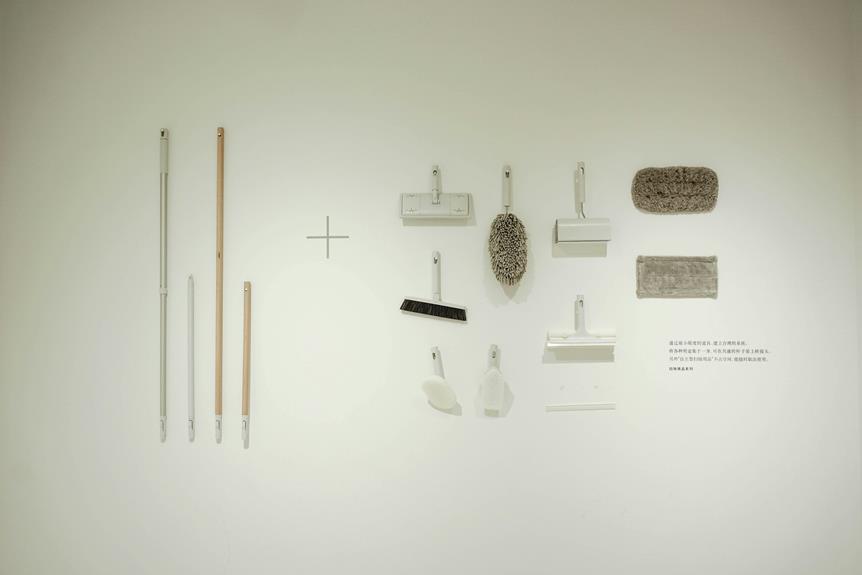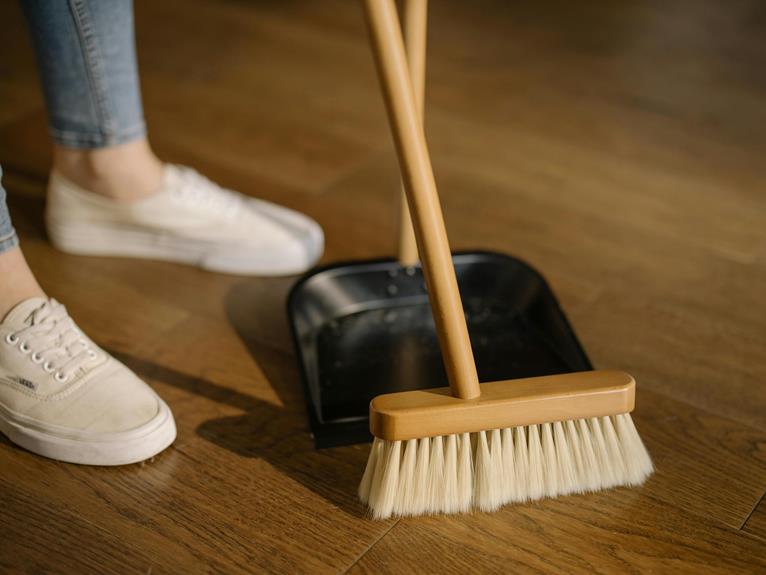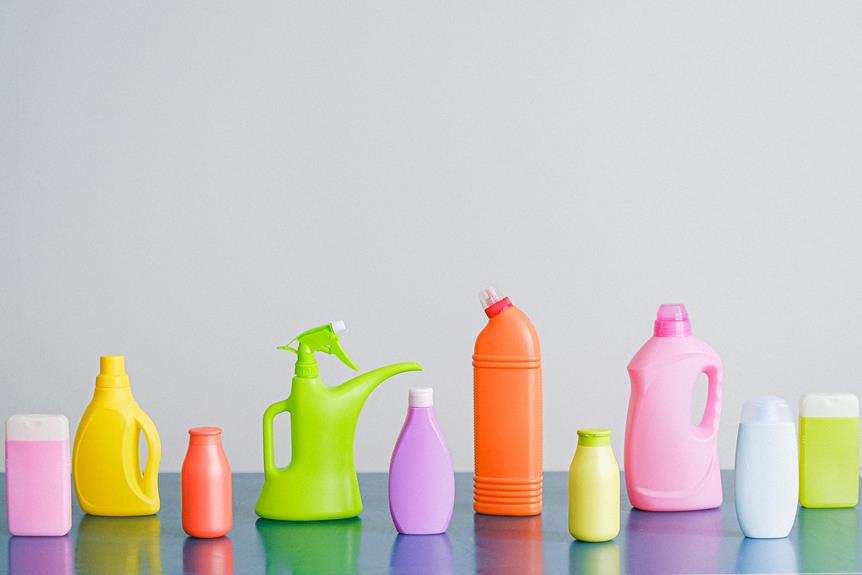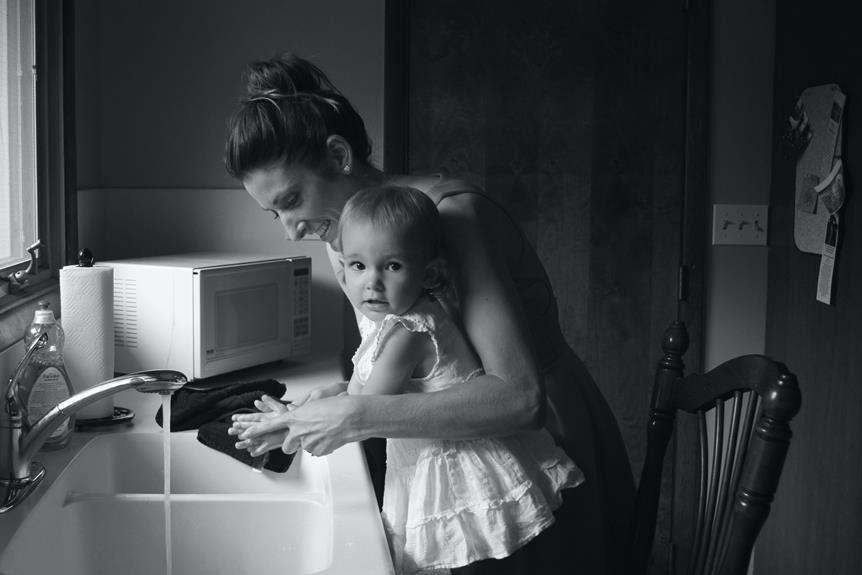Maintaining a well-organized pantry is essential for a smooth and efficient cooking experience.
Seasonal cleaning offers the perfect opportunity to declutter, reevaluate storage solutions, and ensure that your pantry is in top shape for the upcoming months.
In this guide, we will delve into the benefits of seasonal cleaning for a well-organized pantry and offer valuable advice on how to streamline and optimize your pantry space.
Benefits of Seasonal Cleaning
Seasonal cleaning has many benefits that can improve your home life. By keeping your home clean and organized, you create a comfortable and inviting space where you can relax and feel a sense of belonging. A clean home promotes a happier and more productive life for you and your family.
One of the benefits of seasonal cleaning is improved mental well-being. Clutter and mess can cause stress and make it hard to focus on tasks. By decluttering and organizing your home, you create a calm and peaceful environment that allows you to think clearly and be more productive. This can lead to a greater sense of fulfillment and satisfaction in your daily life.
In addition, seasonal cleaning helps maintain the physical health of your home. Regular cleaning removes dust, allergens, and germs that can build up over time. This reduces the risk of illnesses and allergies, creating a healthier living environment for you and your loved ones.
Furthermore, a clean and organized home promotes better time management. When everything has a designated place, you can easily find what you need, saving you time and reducing frustration. This allows you to be more efficient in your daily routines and frees up time for activities that bring you joy and fulfillment.
Setting Goals for a Clean Home
To achieve a clean home, it’s important to set clear and achievable goals for your cleaning routine. Goal setting helps you stay focused and motivated, ensuring that your home remains a serene and welcoming space. Here are some tips to help you set effective goals and overcome any obstacles that may arise along the way:
- Manage your time: Prioritize your cleaning tasks and allocate specific time slots for each one. This will help you stay organized and prevent overwhelm.
- Stay motivated: Find ways to stay motivated during your cleaning routine. For example, create a cleaning playlist with your favorite songs to make the process more enjoyable. You can also set small rewards for each task completed, such as enjoying a cup of tea or watching an episode of your favorite show.
- Track your progress: Keep track of your cleaning progress to stay motivated and see how far you’ve come. You can use a checklist or a cleaning app to track completed tasks and monitor your progress over time.
- Overcome obstacles: Anticipate and plan for obstacles that may hinder your progress. For instance, if you have limited time, break down larger cleaning tasks into smaller, more manageable ones. If you find certain tasks challenging, consider asking for help from family members or hiring professional cleaners.
Essential Cleaning Supplies
Make sure you have all the necessary cleaning supplies to effectively maintain your home. Having the right cleaning tools is crucial for a successful cleaning routine. Invest in a high-quality vacuum cleaner, mop, broom, and dustpan to tackle different types of messes. Explore effective cleaners for various surfaces in your home. Look for multi-purpose cleaners that save you time and effort.
Organize your cleaning supplies with storage solutions. Use storage bins, shelves, or caddies to keep everything in order. Having a designated space for your cleaning supplies makes it easier to find what you need when it’s time to clean.
Consider eco-friendly options when choosing cleaning products. Look for cleaners free from harsh chemicals and made from natural ingredients. You can also make your cleaning solutions using vinegar, baking soda, and lemon juice.
Learn some cleaning hacks to clean your home more efficiently. Use a toothbrush to clean small and hard-to-reach areas or a dryer sheet to remove stubborn stains from surfaces.
Having the right cleaning supplies and tools, along with effective cleaners and storage solutions, will make your cleaning routine easier and more efficient. So, stock up on the essentials and make cleaning a breeze.
Creating a Cleaning Schedule
Start by assessing your cleaning needs and determining how often each task should be done. Creating a cleaning schedule will help you stay organized and ensure that all your cleaning tasks are completed on time. Here are some tips to help you create an effective cleaning schedule:
- Prioritize tasks: Make a list of all the cleaning tasks that need to be done and prioritize them based on importance and frequency. This will help you focus on the most important tasks and make sure they’re done regularly.
- Manage your time: Allocate specific time slots for each cleaning task. This will help you manage your time effectively and prevent tasks from piling up. Set aside dedicated time each day or week for cleaning to make sure it becomes a regular part of your routine.
- Cleaning tips: Look for cleaning tips and shortcuts that can help you save time and energy. For example, vinegar and baking soda can be used to clean effectively and in an environmentally friendly way.
- Use a cleaning checklist: Create a cleaning checklist that includes all the tasks that need to be done. This will help you stay organized and make sure no task is overlooked.
Decluttering Strategies for Every Room
Implement these effective strategies to declutter each room in your home.
A clutter-free home not only looks visually appealing but also creates a sense of calm and order.
Start by applying decluttering techniques to each room, focusing on one area at a time. Begin by sorting items into categories such as keep, donate, or discard. This will help you make decisions about what to keep and what to let go of.
Consider storage solutions that can help you organize and maximize space in each room. Use minimalist living principles by keeping only necessary items or those that truly bring you joy.
Try organizing tips like labeling boxes or bins, using vertical storage options, and implementing systems to maintain order. Optimize space by utilizing underutilized areas such as under-the-bed or over-the-door storage.
Deep Cleaning Tips and Tricks
Now that you have decluttered and organized each room, it’s time to deep clean with these effective tips and tricks.
- Organizing cleaning supplies
- Keep all your cleaning supplies in one place, like under the sink or in a cleaning caddy, to save time searching for them.
- Use clear storage bins or labeled containers to keep similar items together and easily accessible.
- Creating a deep cleaning checklist
- Make a checklist of tasks for each room to ensure you don’t miss anything during your deep cleaning session.
- Prioritize the most important tasks first and break them down into smaller, manageable tasks to stay motivated.
- Using time-saving cleaning hacks
- Use microfiber cloths instead of paper towels for more effective and efficient cleaning.
- Clean from top to bottom in each room to prevent dust and dirt from settling on already cleaned surfaces.
- Using effective stain removal techniques
- Treat stains as soon as possible to increase the chances of successful removal.
- Research and use appropriate stain removal techniques based on the type of stain and fabric to avoid causing further damage.
- Organizing cleaning tools
- Hang brooms, mops, and vacuum cleaners on wall hooks, or use a freestanding organizer to keep them off the floor and easily accessible.
- Use a pegboard or magnetic strips to store smaller cleaning tools and keep them organized.
Tackling Kitchen Organization
To effectively organize your kitchen, start by evaluating the layout and functionality of the space. Organizing your kitchen not only streamlines cooking and meal prep but also creates a sense of calm and belonging in your home.
Begin by focusing on kitchen storage. Take inventory of your cabinets and drawers, and consider adding extra shelving or dividers to maximize space. Keep your countertops clutter-free by storing appliances and utensils that aren’t used often. This will create a clean and open workspace for meal preparation.
Pantry organization is also crucial. Sort through your pantry items, getting rid of expired products and grouping similar items. Clear containers or bins can be helpful for better visibility and accessibility.
Don’t forget about appliance maintenance either. Regularly clean your oven, microwave, and refrigerator to keep them in good working condition.
Maximizing Bathroom Efficiency
To optimize efficiency and create a more streamlined and enjoyable bathroom, start by evaluating its organization and functionality. Effective bathroom storage and organization are key to maximizing space. Here are some tips to help you make the most of your bathroom:
- Maximizing Space:
- Use wall space: Install shelves or hanging organizers to keep frequently used items within easy reach.
- Opt for vertical storage solutions: Install over-the-toilet shelving or tall cabinets to take advantage of vertical space.
- Bathroom Organization:
- Group similar items together: Keep toiletries, cleaning supplies, and towels organized in separate containers or baskets.
- Label storage containers: Use labels to identify items and ensure everything has a designated place.
When it comes to cleaning, consider using multi-purpose cleaners and microfiber cloths for efficient surface cleaning. It’s also important to incorporate bathroom design elements that promote cleanliness and functionality.
Installing a shower caddy or built-in storage shelves in the shower area can be helpful. Choose easy-to-clean materials for surfaces like tiles and countertops.
Organizing Bedroom and Closet Space
If you want to create a more peaceful and efficient bedroom and closet space, start by decluttering and reorganizing. Simplify your language and explain why this is important.
Begin by sorting your clothes into categories: keep, donate, and discard. This will help you identify items you no longer wear or need. Once you’ve narrowed down your clothing collection, address your shoe storage. Invest in shoe racks or hanging organizers to keep your shoes neatly arranged and easily accessible.
Use the KonMari method or the four-box system to make quick decisions about what to keep and what to let go. Lastly, focus on organizing your closet. Install shelves, hooks, or hanging organizers to maximize space and keep everything in order. Use bins or baskets to store accessories like belts, scarves, and hats.
Cleaning and Maintaining Floors and Carpets
Now that you’ve organized your bedroom and closet, let’s focus on cleaning and maintaining your floors and carpets. Having clean and well-maintained floors not only improves the overall appearance of your home but also creates a welcoming and cozy atmosphere.
Follow these tips to keep your floors and carpets in top condition:
- Floor Cleaning:
Regularly sweep or dry mop to remove dust and debris, preventing scratches and preserving the shine of your floors. Use a mild cleaner and a damp mop for hard floors to maintain cleanliness and prevent buildup. - Carpet Maintenance:
Vacuum your carpets at least once a week to remove dirt, allergens, and pet hair, keeping them fresh and extending their lifespan. Treat stains immediately by blotting the affected area with a clean cloth and using a carpet stain remover (remember to test it on a small, inconspicuous spot first).
Refreshing Furniture and Upholstery
Revitalizing your living space involves giving your furniture and upholstery a well-deserved refresh. Taking care of your furniture not only ensures its longevity but also enhances the overall aesthetics of your home.
Upholstery cleaning and furniture care are important tasks that shouldn’t be overlooked. Regular maintenance and periodic cleaning can help remove stains, restore the fabric, and keep your furniture looking as good as new.
When it comes to cleaning upholstery and removing stains, it’s important to consider the type of fabric and use the appropriate cleaning method.
Different fabrics require different approaches, so it’s best to refer to the manufacturer’s instructions or seek professional cleaning services for a thorough and effective cleaning.
Here are some common fabric types and their corresponding cleaning methods:
- Cotton: Vacuum regularly and spot clean with mild detergent or seek professional cleaning services.
- Leather: Wipe with a damp cloth and treat with leather conditioner.
- Microfiber: Vacuum regularly and spot clean with a water-based cleaner.
- Velvet: Gently brush with a soft-bristled brush and seek professional cleaning services for deep cleaning.
- Linen: Dry clean only.
- Polyester: Vacuum regularly and spot clean with mild detergent or seek professional cleaning services.
Efficient Laundry and Linen Management
Efficient Laundry and Linen Management
Managing your laundry and linens efficiently is important for maintaining a clean and organized home. To make sure your laundry routine runs smoothly, here are some helpful tips:
- Laundry Organization
- Sort your laundry by color and fabric type to prevent colors bleeding and damage.
- Use separate laundry baskets or hampers for whites, darks, and delicates.
- Linen Storage
- Keep your linens organized by neatly folding and stacking them in a designated linen closet or storage area.
- Consider using storage bins or vacuum-sealed bags to save space and protect linens from dust and insects.
When it comes to removing stains, try these laundry hacks:
- Stain Removal Techniques
- Treat stains promptly by pre-treating them with stain removers or household items like vinegar or baking soda.
- Test stain removal products on a small, hidden area of the fabric before applying them to the entire stain.
Lastly, mastering efficient folding techniques can save time and keep your linens looking neat:
- Folding Techniques
- Learn how to fold fitted sheets properly to avoid a messy linen closet.
- Utilize folding boards or templates for consistent and space-saving folds.
Maintaining a Clean and Tidy Home Office
To keep your home office clean and organized, it’s important to establish effective cleaning and decluttering practices. A clean and tidy home office promotes a sense of calm and focus, enhancing your productivity and work efficiency.
Start by setting up a designated space for your home office. Make sure your desk and chair are comfortable and supportive, especially during long work hours. Consider investing in adjustable furniture and accessories that promote good posture and reduce strain on your body.
Next, implement storage solutions to keep your office supplies, files, and documents organized. Use shelves, drawers, and storage bins to categorize and store items systematically. A clutter-free workspace not only improves productivity but also reduces stress and increases concentration.
Digital decluttering is equally important. Organize your computer files and folders logically and regularly delete unnecessary documents and emails. Utilize cloud storage or external hard drives to back up important files and free up space on your computer.
Outdoor Cleaning and Maintenance
Outdoor cleaning and maintenance are important for creating a well-maintained and inviting home environment. To achieve this, there are several key aspects to consider:
- Outdoor Landscaping: Enhance the beauty of your surroundings by regularly mowing the lawn, trimming hedges, and removing weeds. You can also add colorful flowers or plants to create a warm and welcoming atmosphere.
- Patio Maintenance: Your patio is a place for relaxation and gatherings. Keep it clean by sweeping away debris, wiping down furniture, and power washing the surface to remove dirt and stains. Consider adding cozy seating and decorative elements to make it inviting for friends and family.
- Garden Care: Take pride in your garden by regularly watering and fertilizing your plants, pruning overgrown branches, and removing dead foliage. Adding mulch can help retain moisture and prevent weed growth, ensuring a vibrant and flourishing garden.
- Pool Cleaning: If you have a pool, it’s crucial to keep it clean. Regularly skim the surface to remove leaves and debris, clean the filter, and check the chemical balance. A well-maintained pool provides a refreshing escape and a source of joy and relaxation.
- Exterior Power Washing: Periodically power wash your home’s exterior to give it a fresh look. This will remove dirt, mold, and grime, revealing the true beauty of your home’s facade.
Creating a Cleaning Routine for Kids
Make cleaning a fun and important part of your child’s daily routine. Getting your kids involved in cleaning not only teaches them valuable life skills but also helps them develop a sense of responsibility.
Start by assigning age-appropriate tasks to your children. For younger kids, tasks like picking up toys or making their bed are great starting points, while older kids can handle more complex tasks like vacuuming or washing dishes. By giving them tasks they can handle, you’re empowering them to take ownership of their environment.
To make cleaning more enjoyable, consider creating a reward system. You can offer small incentives like stickers or extra playtime for completing their cleaning tasks. This not only motivates your kids but also reinforces the idea that cleaning is a positive and rewarding activity. Furthermore, it teaches them the importance of hard work and responsibility.
It’s important to anticipate resistance from your kids. They mightn’t always be eager to clean, and that’s okay. Use positive reinforcement and praise when they do a good job, and be patient when dealing with resistance.
Encourage them to take breaks and make cleaning a collaborative effort by involving the whole family. This will create a sense of belonging and make cleaning feel less like a chore.
Sustainable Cleaning Practices for a Greener Home
Creating a greener home environment involves implementing eco-friendly cleaning practices. By adopting sustainable cleaning habits, you can reduce your carbon footprint and contribute to a healthier planet.
Here are some simple yet effective ways to make your cleaning routine more eco-friendly:
- Choose cleaning products made from natural ingredients and free from harsh chemicals. Look for labels indicating they’re eco-friendly and biodegradable.
- Use reusable cloths or mop pads instead of disposable cleaning wipes or paper towels. This reduces waste and lessens your impact on the environment.
- Minimize waste by avoiding unnecessary cleaning supply purchases and using up what you have before buying more. Consider buying cleaning products in bulk or refilling containers to reduce packaging waste.
- Explore natural cleaning solutions like vinegar, baking soda, and lemon juice. These everyday items are effective and non-toxic, making them better for the environment and safer for you and your family.
Conclusion
Seasonal cleaning is important for a happier and more productive home life. By setting goals, using essential supplies, and creating a schedule, you can maintain a clean and clutter-free space.
It’s also crucial to remember to maintain your home office and tackle outdoor cleaning. Getting the kids involved in their cleaning routine can teach them responsibility.
Adopting sustainable cleaning practices can help you be environmentally conscious.

